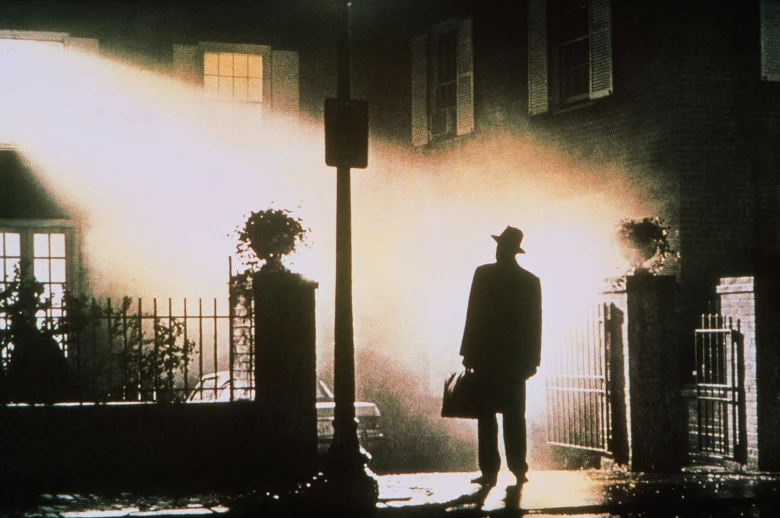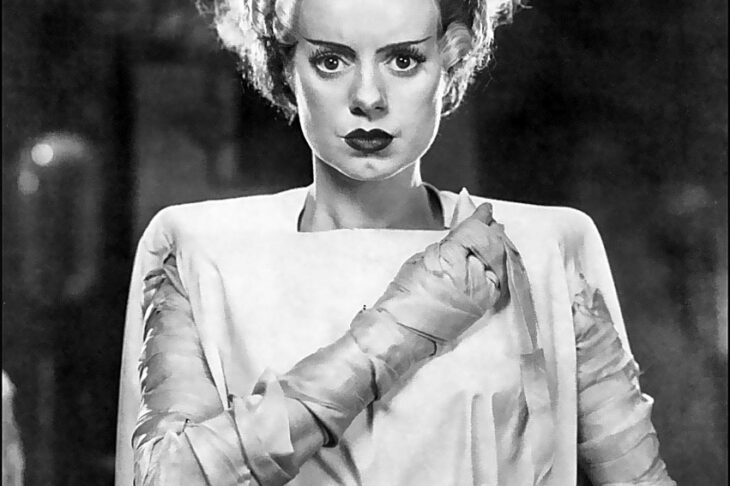
10 Questions You Should Ask About Horror Novels and Films if You Want to be a Better Writer
We like to dig deep here at the Rules of Gruesome so where are some questions you may not have asked about your favourite horror novels and films.
If you’re set on being a horror writer, then finding answers to these supernatural puzzles should help you better understand plotting and imagery and how it can make a difference to your voice. While we all like to get wrapped up in the story, it’s important if you want to hone your craft to go back and ask a few pertinent questions.
There’s a great book called Reading Like a Writer by Francine Prose which is well worth a look at.
Here are just a few questions and possible answer that we’ve come up with at The Rules of Gruesome.
1. What is the significance and symbolism of the twins in the Stephen King novel The Shining?
In the horror novel and film, the identical twin girls play a significant symbolic role and are one of the enduring features of this supernatural tale. The twins, who are dressed in matching blue dresses, are seen standing in the hallway of the Overlook Hotel, beckoning to Danny Torrance, the main character’s son.
The twins are often interpreted as a representation of death or the supernatural. They are believed to be the ghosts of two sisters who were murdered by their father, a former caretaker of the hotel, years before the events of the novel and film.
As ghosts, the twins represent a lingering presence of the past and the horror that took place within the hotel.
Their identical appearance and matching dresses may also symbolize the idea of duality or doubling, suggesting that the characters and the events in the novel and film may have mirrored nature. The twins could possibly represent innocence, as their childlike appearance and behaviour contrasts with the violent and disturbing events that occur throughout the story.
The symbolism of the twins in The Shining remains open to interpretation and this sort of question is a great one to ask if you are trying to write your own novel.
2. What really happens at the end of The Thing?
The Thing was directed by John Carpenter and the film ends with some ambiguity, leaving the audience to draw their own conclusions. The final scene of the film shows two surviving characters, R.J. Macready (played by Kurt Russell) and Childs (played by Keith David), sitting outside the destroyed research station in the middle of Antarctica. They share a bottle of whiskey as they watch the station burn to the ground.
The ambiguity arises from the fact that neither of the characters knows if the other is human or the alien that has been taking over the bodies of other organisms. The Thing is known for its ability to imitate and perfectly replicate any living organism it encounters, including humans.
The film’s ending leaves the audience with a few unanswered questions, including:
- Is Macready human or a Thing? Is Childs human or a Thing?
- If one or both characters are the Thing, will they be able to survive in the cold?
- If one or both characters are human, how will they be able to survive in the middle of nowhere with no supplies or transportation? Do we really care?
- What happens next? Is this the end of the alien threat or will it continue to spread and infect other organisms?
The open-ended nature of the finale has led to various interpretations and fan theories over the years. Some believe that both Macready and Childs are now alien, while others believe that only one of them is a The Thing. Others think that they are both human but will ultimately die in the cold.
3. In the Exorcist, what is the nature of the demon and why did it choose Regan as the host?
In The Exorcist, the nature of the demon possessing Regan is not explicitly stated, but it is heavily implied to be a powerful and malevolent entity that has been around for many centuries. It is suggested that the demon can possess and control human bodies, and that it enjoys causing pain and suffering.
As for why the demon chose Regan as its host, it could be because Regan was vulnerable and weak, making her an easy target. Additionally, the demon may have been drawn to Regan because of her mother’s work as an actress, which brought her into contact with many different people and made her a prime candidate for possession.
Another theory is that the demon was deliberately seeking out someone with a strong connection to religion, as Regan’s mother was a devout Catholic. By possessing Regan, the demon was able to challenge the power of God and the Catholic Church, which is a major theme of the movie. Ultimately, the movie leaves the exact nature and motivations of the demon open to interpretation, which is one of the reasons why it remains such a powerful and enduring horror classic.
4. In the original Night of the Living Dead, what caused the dead to rise and start devouring the living?
In Night of the Living Dead and subsequent movies, the cause of the zombie outbreak is not fully explained. It is suggested that it may have been caused by radiation from a space probe that exploded in the Earth’s atmosphere.
Throughout the movie, there are references to the space probe and the possibility that it may have been carrying a harmful substance. It is also implied that the radiation from the probe may have caused the dead to come back to life and start attacking the living.
As for how the zombie plague could be stopped or contained, there may be no easy solution. The authorities in the movie attempt to quarantine the infected areas and kill the zombies using various methods, including guns and explosives, but these methods are largely ineffective. The zombies are able to overwhelm the living and spread the infection, leading to a breakdown of society and the collapse of civilization.
Ultimately, the movie suggests that the zombie outbreak represents a catastrophic event that is beyond human control. It is a powerful and unsettling vision of a world where death is no longer the end, and the living are forced to fight a never-ending battle against the undead.
5. In Halloween, what is the source of Michael Myers’ supernatural powers and how was he able to survive being shot and falling off the balcony?

In “Halloween” (1978), the source of Michael Myers’ supernatural powers is never that clear and doesn’t need to be. There is a strong suggestion that he is driven by a deep-seated evil that is beyond human understanding which covers a lot of bases.
Throughout the movie, there are references to Michael’s troubled childhood and his obsession with death and violence. He may have a connection to the supernatural, as he seems to have an uncanny ability to sense and track his victims, as well as a remarkable resilience to physical harm.
As for how he was able to survive being shot and falling off the balcony, there’s the suggestion that he is a supernatural being and therefore virtually indestructible. While he is shown to be vulnerable to bullets and other physical damage, he is able to withstand a remarkable amount of punishment and recover quickly from injuries that would be fatal to a normal human being.
His ability to survive as well as his single-minded determination to kill his sister, Laurie Strode. This makes him a powerful and terrifying force of nature, capable of striking fear into the hearts of even the bravest and most resourceful survivors.
6. In The Omen what is the true identity and origin of Damien, the demonic child who is destined to become the Antichrist?
Damien’s true identity and origin are tied to a powerful and mysterious conspiracy. The movie suggests that he is not a normal child, but rather son of Satan, destined to become the Antichrist and bring about the end of the world as we know it.
There are references to a series of dark and disturbing events that seem to have surrounded Damien since his birth. These include the deaths of his mother and the nurse who attended his birth, as well as a series of strange coincidences and accidents that seem to follow him wherever he goes.
There is a powerful group of individuals who are aware of Damien’s true nature and are working to protect him and ensure that he fulfils his destiny as the Antichrist. Those fighting to uncover the truth include his adoptive parents and a priest who are determined, eventually, to stop him at any cost.
The movie leaves many questions unanswered about Damien’s true identity and origin, leaving it up to the viewer to interpret the events of the film and draw their own conclusions. However, the overall message of the movie is clear: Damien is a powerful and malevolent force, capable of wreaking havoc and destruction on the world, and those who stand in his way do so at their own peril.
7. In the Silence of the Lambs, what is the full extent of Hannibal Lecter’s crimes and how did he become such a brilliant and manipulative psychiatrist?
Hannibal Lecter’s crimes are extensive and horrifying. He is a brilliant and manipulative psychiatrist who is also a cannibalistic serial killer and that dichotomy alone makes him a very interesting character.
Lecter has killed and eaten numerous people, often using his intelligence and charm to lure them into his trap. He is shown to be a master of manipulation, using his psychological expertise to control those around him and get what he wants
As for how he became such a brilliant and manipulative psychiatrist, the movie and book suggests that it may have been the result of a combination of factors. Lecter is portrayed as a highly intelligent and cultured individual, with a deep understanding of human psychology and behavior. He is also shown to be a victim of abuse and trauma, which may have contributed to his own psychopathic tendencies.
Lecter’s brilliance may be linked to his own personal experiences with violence and suffering but strangely he is able to empathize with his victims and understand their pain and fear, which gives him a unique insight into the criminal mind, one of the reasons he is first introduced in the book The Red Dragon.
Ultimately, the character of Hannibal Lecter remains a complex and fascinating enigma, both feared and admired for his intelligence and ruthlessness. The movie leaves many questions unanswered about his past and his motivations, making him one of the most memorable and iconic villains in cinematic history.
8. In Rosemary’s Baby, what exactly happened to Rosemary’s baby, and was it really the offspring of Satan?
At the end of the film, the fate of Rosemary’s baby is uncertain but it is strongly suggested that the child is the offspring of Satan and will be looked after.
There are numerous hints and clues that suggest that something sinister is afoot as the movie progresses. Rosemary is repeatedly warned about the dangers of the apartment building she and her husband move into, and she begins to suspect that her neighbours are part of a satanic cult. She also experiences strange dreams and hallucinations, and then suspects that her own husband may be involved in the conspiracy.
Of course, it becomes clear that Rosemary’s fears are not unfounded. She is drugged and impregnated by the cult, who intend for her to give birth to the Antichrist. Despite her efforts to escape, she eventually gives birth to the child, who is taken away from her.
The movie ends with Rosemary discovering that her husband is involved in the cult and has allowed their child to be raised by them. The final scene suggests that she has accepted her fate and has chosen to care for the child, despite its demonic nature.
While the movie never explicitly confirms that the child is the offspring of Satan, there are numerous clues and hints that strongly suggest this to be the case. Evil forces are certainly at work, and there’s no doubt that Rosemary’s baby is the product of a diabolical conspiracy.
9. In the 1931 version of Frankenstein, what became of the Monster after he was last seen being carried away by the windmill’s blades, and could he ever find true acceptance and happiness among humans?
The movie ends with the Monster trapped in a burning windmill, which collapses around him as he lets out a mournful cry. There’s always a hint that the monster has survived but one of the enduring questions is that of acceptance. Throughout the movie and its sequels, the Monster is shown to be a deeply sympathetic and tragic figure, misunderstood by the humans around him and driven to violence and despair by their cruelty and rejection.
While there are moments of kindness and understanding shown towards the Monster, such as his friendship with a blind hermit, he ultimately remains an outsider, unable to find a true home or sense of belonging in the human world. The message of the Frankenstein films is ultimately one of empathy and understanding, urging viewers to see the humanity and vulnerability in even the most monstrous of characters.
10. Why Does the Protagonist in IT appear as a clown?
In Stephen King’s IT, Pennywise appears as a clown for several reasons, primarily we think to lure children and to play on their fears.
One of the main themes of IT is the power of fear and how it can be used to control and manipulate people. Pennywise, as a clown, is able to exploit the natural fears and vulnerabilities of children, using his playful appearance to lure them into his trap. Additionally, the clown persona allows Pennywise to take on a variety of different forms and identities, adapting to the fears of each individual victim. For example, he may appear as a monster, a ghost, or a werewolf depending on the fears of the person he is targeting.
The clown persona also has a deeper symbolic significance in the context of the story. Clowns are traditionally seen as figures of entertainment and joy, but they can also be seen as unsettling and eerie. By taking on the guise of a clown, Pennywise embodies the dark side of this cultural icon, playing on our fears of the unknown and the uncanny.
The clown persona is an effective tool for Pennywise to use in his efforts to terrorize and manipulate his victims. It allows him to appear harmless and playful while concealing his true nature as a malevolent and sadistic entity.
Asking ‘WHY’ is important if you want to be a good horror writer. It gives you a chance to look at a plot twist or character choice more closely and find out why it works (or doesn’t work) and how, maybe, it could be done differently or better.
Let us know your thoughts in the comments section below.

